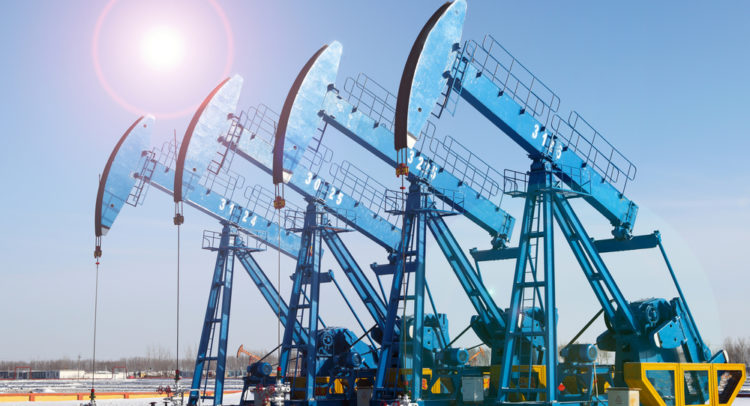Business
Oil Firms Increase Methane Detection Campaign in Developing Nations

A dozen of the largest oil and gas companies around the world are extending their satellite monitoring campaign to identify methane emissions in developing nations after 26 significant leaks of the greenhouse gas were found over Kazakhstan, Egypt, and Algeria.
The Oil and Gas Climate Initiative intends to expand its one-year monitoring campaign, which concluded in August 2023, to seven or eight additional countries. The initiative counts Shell, Saudi Aramco, and ExxonMobil among its members. It stated that methane emissions are already being decreased by the campaign.
In October 2023, three large methane sources that together emitted 3,200 kg of methane per hour—roughly the hourly carbon emissions of nearly 4,000 gasoline-powered cars—were turned off by two operators in Kazakhstan and Algeria.
According to a report that will be released on Monday at CERAWeek, a significant energy conference in Houston, OGCI is working with four operators to find solutions for the remaining emissions sources.
To avoid using a tactic known as “name and shame,” the report chooses to withhold the identities of all of the operators in charge of the methane leaks.
The former executive of the Norwegian energy company Equinor, Bjørn Otto Sverdrup, chair of OGCI’s executive committee, stated: “We are able to detect emissions and then use sophisticated technology to make the gas visible — that’s one step. Then we use the unique access that we have as companies to be able to engage with local operators even in remote geographies.”
Policymakers’ attention is increasingly being attracted to the climate threat posed by methane emissions from oil and gas infrastructure, which is why OGCI, an organization led by a chief executive and representing about 30% of global oil and gas production, is launching this campaign.
Over a 20-year period, the invisible gas can trap heat in the atmosphere more than 80 times more effectively than carbon dioxide. According to experts, methane is roughly one-third of the rise in global temperatures caused by emissions since the beginning of the industrial era.
Methane emissions are still close to record levels even though more than 150 nations promised to clamp down on them during the COP28 in Dubai in December.
More than 120 million metric tonnes of methane were released into the atmosphere last year by the oil and gas industry, according to a report released by the International Energy Agency last week. This represents a slight increase from 2022.
According to the report, the US, which produces the most gas and oil worldwide, also emits the most from these activities, with Russia coming in second.
The OGCI report focuses on the organization’s interactions with major fossil fuel infrastructure joint venture partners and national oil companies, as well as its use of satellite monitoring through GHGSat, a business supported by an OGCI-founded climate investment fund. However, it also draws attention to some of the difficulties the sector faces in finding and repairing methane leaks and cutting emissions in developing nations.
Local operators verified on the ground only 15 out of the 26 sizable and continuous methane sources that were detected by satellite. Sometimes it was impossible to locate the source, or the leak might have stopped. Several of the cases identified in the report still required action to reduce emissions from the leaks that were found.
Leaks in equipment and pipelines, incomplete combustion from burning pits of waste liquids and gases from the production of fossil fuels, and venting and incomplete flaring of methane from equipment and storage tanks were the primary sources of methane emissions found.
Particularly in developing nations where there is frequently less emphasis on greenhouse gas emissions than in developed economies, satellite detection is becoming an increasingly important tool for finding methane leaks.
The OGCI initiative, according to Environmental Defense Fund energy director Andrew Baxter, is significant because it tackles emissions by combining peer-to-peer involvement, satellite detection, and technical and financial support.
“Maybe as long as methane emissions are being reduced, that’s enough. But I think transparency is a huge incentive for folks to act,” Baxter said, adding that a new methane-sniffing satellite launched by EDF this month would provide full transparency.
-

 Sports4 weeks ago
Sports4 weeks agoAl Ahly vs Inter Miami, 2025 FIFA Club World Cup – Preview, Prediction, Predicted Lineups and How to Watch
-
Health3 weeks ago
Back to Roots: Ayurveda Offers Natural Cure for Common Hair Woes
-

 Tech3 weeks ago
Tech3 weeks agoFrom Soil to Silicon: The Rise of Agriculture AI and Drone Innovations in 2025
-

 Startup4 weeks ago
Startup4 weeks agoHow Instagram Is Driving Global Social Media Marketing Trends
-

 Sports3 weeks ago
Sports3 weeks agoFIBA 3×3 World Cup 2025: Full Schedule, Preview, and How to Watch
-

 Science4 days ago
Science4 days agoJuly Full Moon 2025: Everything You Should Need to Know, When and Where to See Buck Moon
-

 Gadget3 weeks ago
Gadget3 weeks agoThings to Know about Samsung Galaxy S26: What’s New and What’s Next
-

 Sports4 weeks ago
Sports4 weeks agoWorld Judo Championships 2025: Full Schedule, Date, Time, Key Athletes and How to Watch















